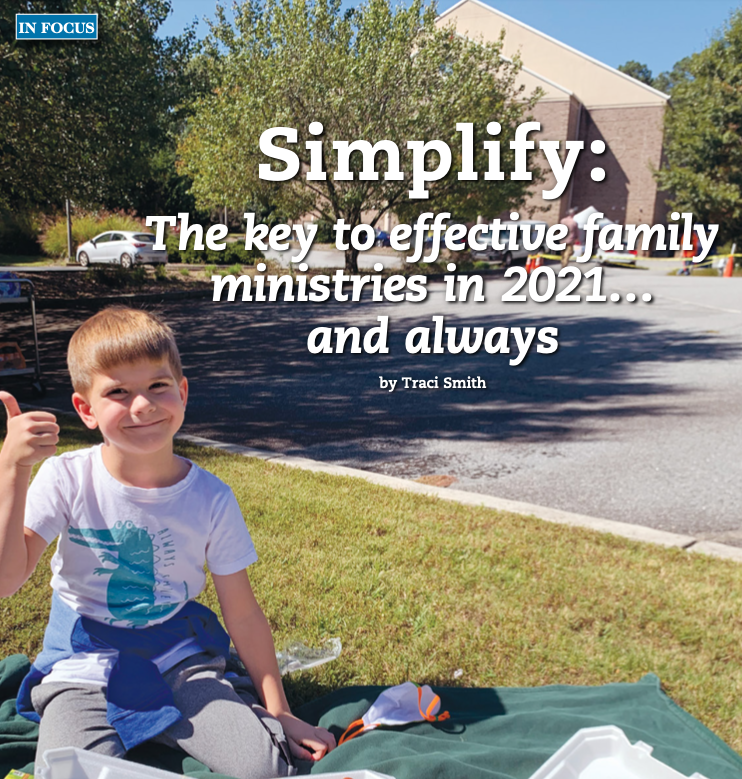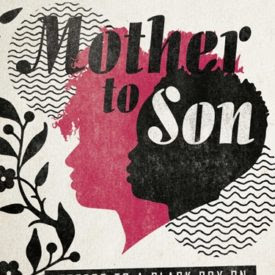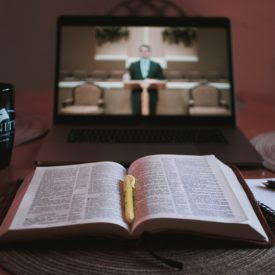For example, in the Gospel text for Palm Sunday, Mark tells us that when Jesus entered the temple, he “looked around at everything.” His careful scrutiny of the scene is worth pondering, for it is a prelude to the temple incident on the following day, when Jesus drives out the money changers, saying “it is written that my house shall be a house of prayer for all nations, but you have made it into a den of robbers” (Mark 11:17). This incident is the last straw for the religious authorities, precipitating the events of his passion. Thus, Jesus’ survey of the scene in Mark 11:11, his “looking around at everything,” is a provocative, prophetic and dangerous looking — a prelude to the cross and resurrection.
There are other stories in Mark in that feature Jesus’ steady gaze. For example, in the preceding chapter, when a rich man comes to Jesus and asks, “What must I do to inherit eternal life,” Mark notes that Jesus, “looking at him, loved him and said, ‘You lack one thing; go, sell what you own, and give the money to the poor, and you will have treasure in heaven.’ When [the rich man] heard this, he was shocked and went away grieving, for he had many possessions.” On the heels of this encounter, Jesus “looked around and said to his disciples, “It is easier for a camel to go through the eye of a needle, than for someone who is rich to enter the kingdom of God.” When the disciples asked, “Then who can be saved?” again Jesus “looked at them and said, ‘For mortals it is impossible, but not for God; for God all things are possible.’ ”
Mark’s very first reference to Jesus’ gaze is at the moment of baptism: “Just as he was coming up out of the water, he saw the heavens torn apart and the Spirit descending like dove on him” (Mark 1:10). This vivid imagery of divine “tearing apart” resurfaces at the moment when Jesus breathes his last upon the cross, framing his ministry on both ends: “the curtain of the temple was torn in two, from top to bottom” (Mark 15:38), unleashing the power of the Holy into the world.
All such references to Jesus’ “looking” bring to mind an extraordinary icon on the cover of “Christ in the Margins,” a stunning book by Robert Lentz and Edwina Gateley. The book, a collection of and commentary on 40 icons, features on its cover one of Christ gazing upon the viewer from behind barbed wire. (Click here to view the book cover.) Other icons in the volume feature various persons living on the margins who have worn the face of Christ in a unique way — saints such as St. Francis of Assisi, Julian of Norwich, Steven Biko of South Africa, César Chávez (a champion of poor farmworkers) and Harvey Milk of San Francisco. In every one of them, the eyes of the iconic figures gaze at us.
You may be wondering, what is an icon? An icon is a spiritual painting that represents some aspect of the divine in holy people. They are used as part of prayer practice — one prayerfully gazes at an icon of a holy figure in order to see something of God in it. Icons frequently represent the risen Christ as a window into the world of God. They are meant to open up to us a world not customarily seen. In artist Robert Lentz’s provocative icons drawn from marginal places, we are invited to recognize the face of Christ in new and unexpected ways.
The book cover icon of Christ gazing upon us from behind barbed wire is, for me, an unforgettable one. At first glance, one may presume that he is imprisoned, recalling Jesus’ words in the parable of the last judgment: “I was in prison and you visited me” (Matthew 25:36). But an icon is never meant to be taken literally — it opens us to prayerful reflection in unexpected ways. For example, we may find ourselves wondering: Do we try to imprison or tame Christ in various ways? It may also occur to us that the image of Christ behind barbed wire does not clearly identify which side of the fence he is on, evoking us to ask: Is Christ imprisoned or are we? Is he gazing at us through the barbed wires of realities that confine us, holding us captive?
Gospel stories also function as icons in important respects — they open up unexpected perspectives, evoking prayerful reflection. For instance, in the lectionary text for Palm/Passion Sunday, when Jesus entered the temple and “looked around at everything,” is he not also looking at us — at our religious institutions and practices, observing barriers and obstacles that need to be opened up or broken down? When Jesus looks lovingly at the rich person, is he not also looking at us, inviting our attention to ways in which our privilege imprisons us? And when the disciples ask, “Then who can be saved?” and Jesus “looks” at them, is he not also looking at us as he answers, “For mortals it is impossible, but not for God; for God all things are possible”? And when, at the moment of his baptism, Jesus gazes at the heavens as they are being torn apart and at the Spirit of God descending upon him like a dove, does not this scene direct our gaze also toward the downward movement of God’s Spirit into our lives and into our world in Jesus’ life, ministry, death and resurrection, in order to open up new possibilities in our midst?
The Christ hymn of Philippians 2 also reflects this downward mobility of God in Christ into the trenches of human life — into the brokenness, suffering and captivities of human existence. The hymn speaks of the kenosis, or self-emptying, of God in order to redeem the world. In “Pastrix,” Nadia Bolz-Weber has captured this movement so well: “God simply keeps reaching down into the dirt of humanity and resurrecting us from the graves we dig for ourselves through our violence, our lies, our selfishness, our arrogance and our addictions. And God keeps loving us back to life over and over.” That is the face of Christ I see in Lentz’ iconography and in the events of the Holy Week before us.
So as we enter into Holy Week, ponder this God who looks with compassion upon us — a God who pulls the barbed wire apart as if to reach into our brokenness, our graves, our prisons and our deepest fears, seeking to free us. This is the God “who has shown in our hearts to give the light of the knowledge and of the glory of God in the face of Jesus Christ” (2 Corinthians 4:6).
This week:
1. What strikes you about Mark’s reference to Jesus’ “looking around at everything” when he enters the temple? What might he see were he to observe your religious practice and that of your congregation?
2. Mark tells us that Jesus looked at a rich person, loved him and invited him to sell his goods and give the money the poor. What do you imagine Jesus might observe and say about our own realities of privilege?
3. What do you make of Jesus’ baptismal vision of the heavens being “torn apart” and the Spirit descending on him like a dove? What do you think this vivid – even violent – imagery or “tearing” conveys? Is God’s Spirit on the loose in this world?
4. Reflect on the icon of Christ gazing at us from behind barbed wire. What strikes you most about this image? What reflection does it evoke? Is Christ imprisoned, or are we? What might he see that holds you captive?
5. The “Christ hymn” in Philippians 2 speaks of the downward movement of God in Christ into the trenches of human life — into the brokenness, suffering and enslavements of human existence. How does this downward movement – this downward mobility – inform your understanding of God? What do you think of Nadia Bolz-Weber’s observation?
6. As you move through Holy Week, ponder the God who looks with compassion upon us — the God who pulls the barbed wire apart as if to reach into our brokenness, our graves, our prisons and our deepest fears. What does this mean for you?












No comments:
Post a Comment